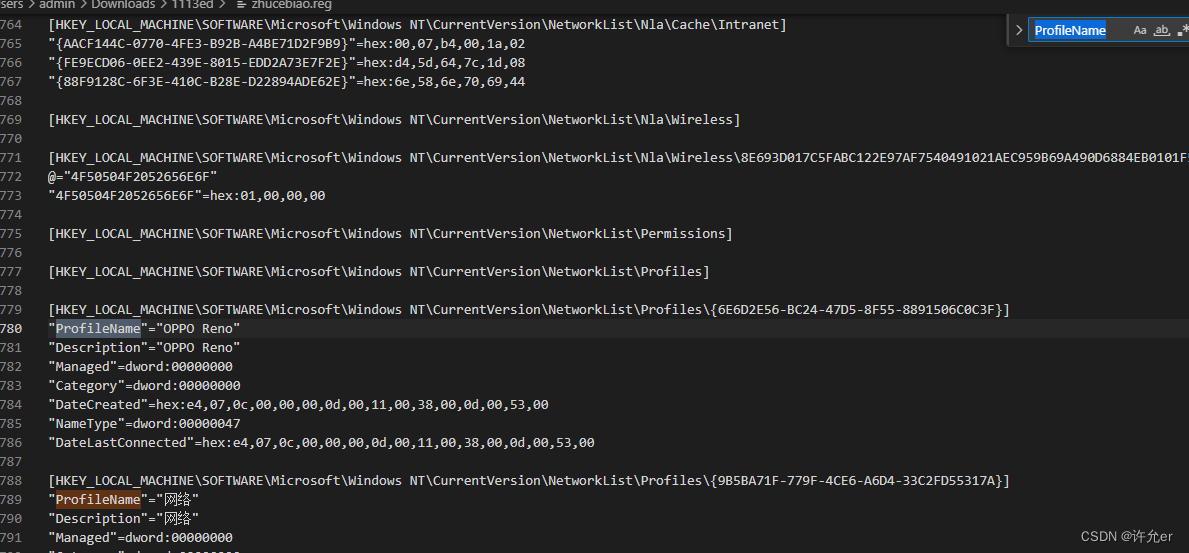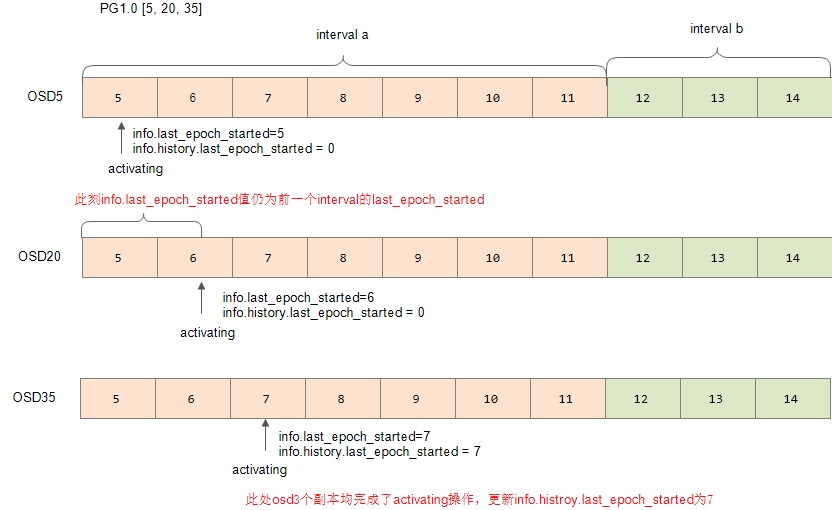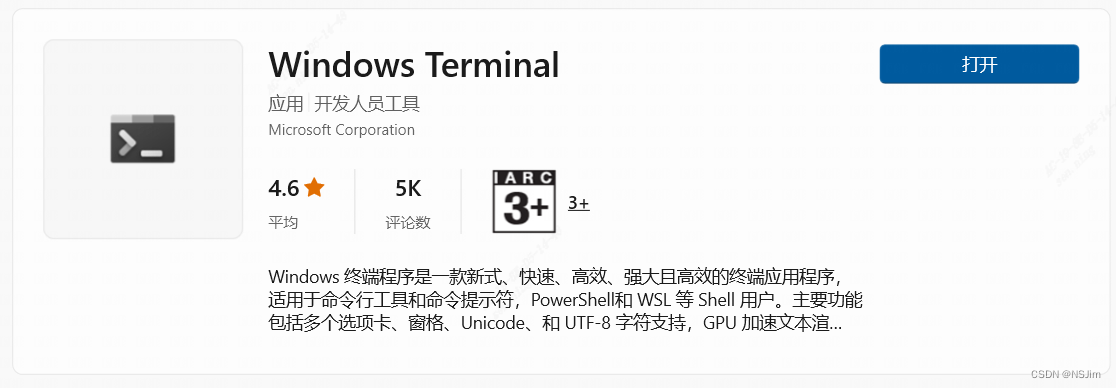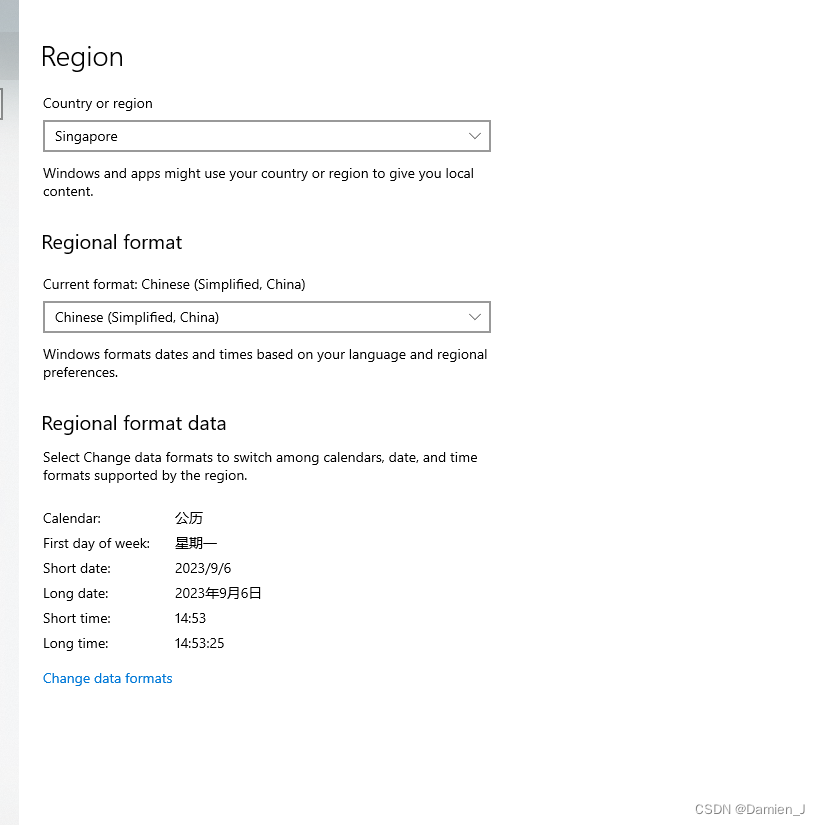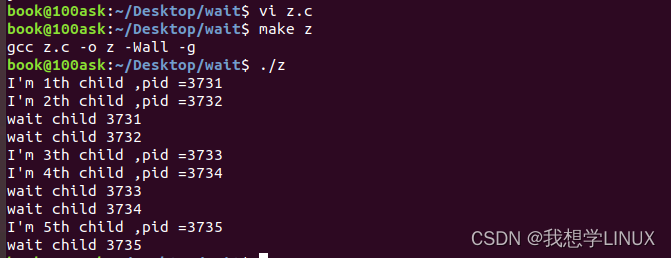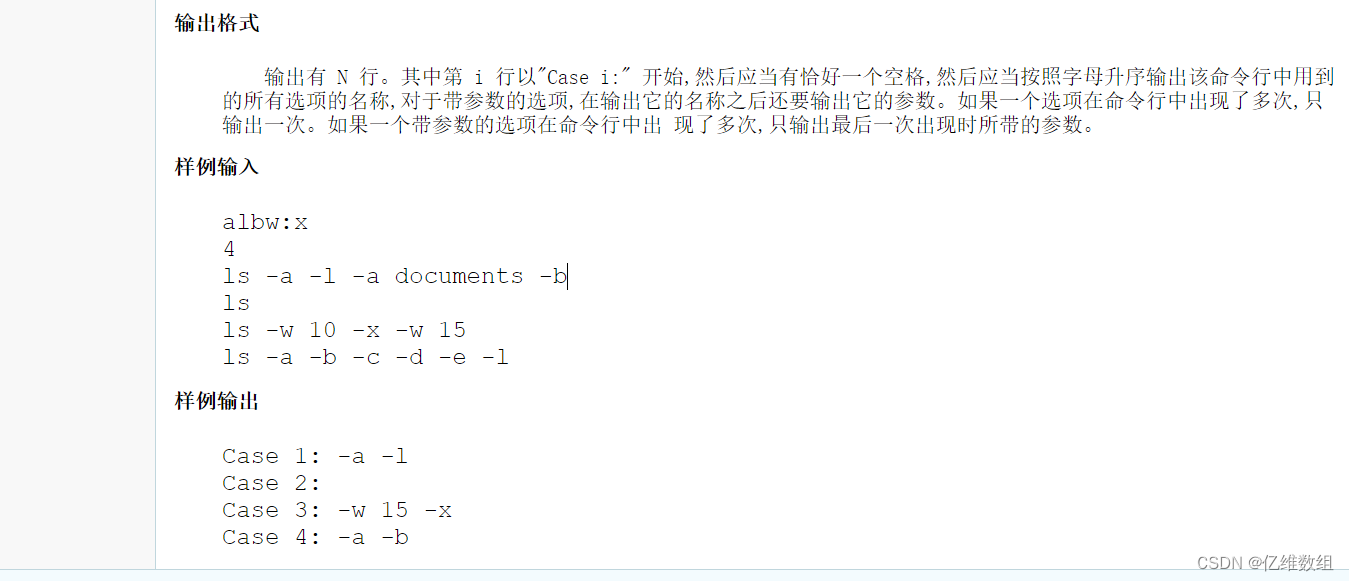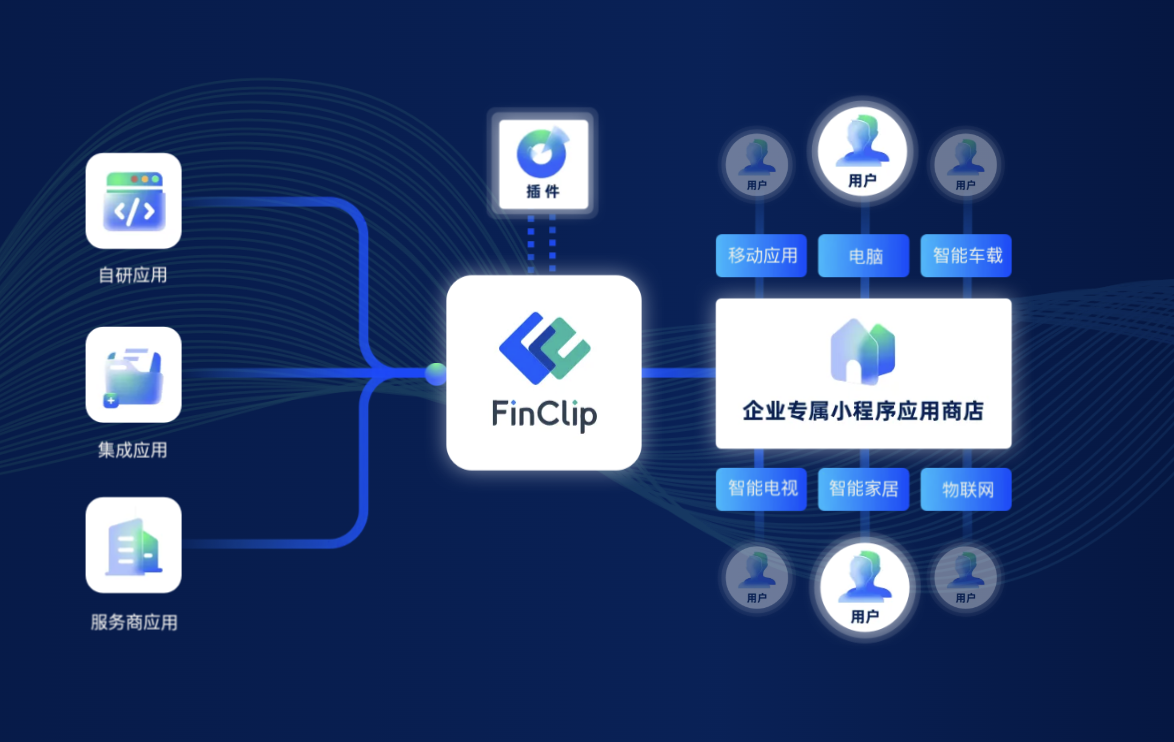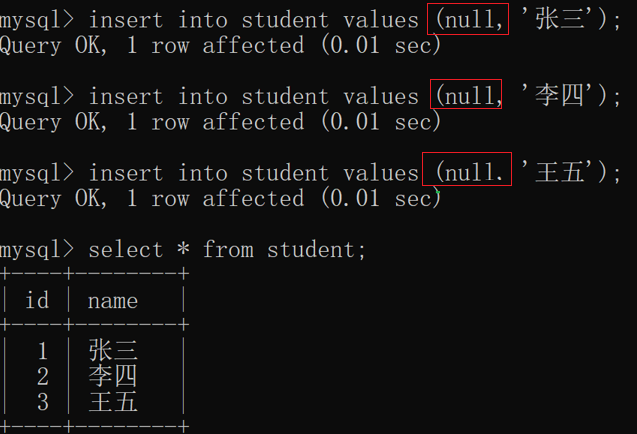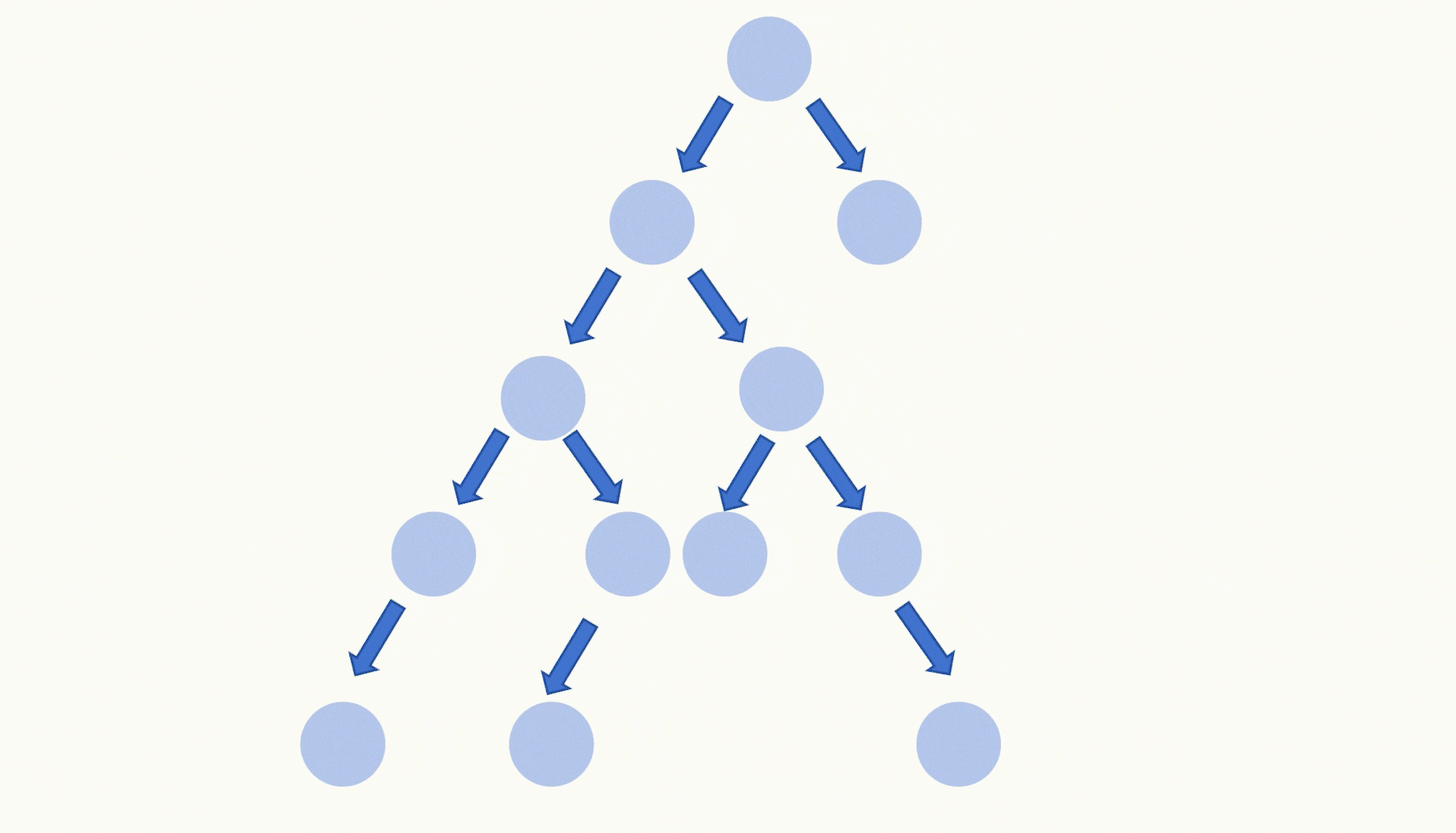之前的文章讨论了Fragment的销毁流程,初始状态为resume,然后经历pause -> stop -> destroyView -> destroy -> detach这么几个流程(本篇文章基于Support27.1.1来分析的)。清楚了Fragment的销毁,那也来看看Fragment的创建,这里先放一张Fragment生命周期的图,如下:

该图包含了Fragment从创建到销毁的所有生命周期方法及与相应Activity生命周期状态的对关系,相应面试过程中如果遇到Fragment相关的问题,应该都不会逃过生命周期相关的问题。然而生命周期只是Fragment运行的表现,它是如何一步步运行起来的呢?这篇文章聚焦Fragment的创建,从源码角度分析Fragment的创建流程。
由于Fragment的流程依附于相应Activity的生命周期,因此这里以Activity的onCreate、onStart、onResume为主线来说明Fragment的生命周期是如何转换的。
目录
1. Activity.onCreate
2. Activity.onStart
3. Activity.onResume
1. Activity.onCreate
在Activity的onCreate执行的时候,我们的Fragment则经历了onAttach -> onCreate ->onCreateView -> onActivityCreated几个生命周期方法,下面从FragmentActivity的onCreate开始分析,老规矩上代码:
@SuppressWarnings("deprecation")
@Override
protected void onCreate(@Nullable Bundle savedInstanceState) {
mFragments.attachHost(null /*parent*/);//A
super.onCreate(savedInstanceState);
NonConfigurationInstances nc =
(NonConfigurationInstances) getLastNonConfigurationInstance();
if (nc != null) {
mViewModelStore = nc.viewModelStore;
}
if (savedInstanceState != null) {//B
Parcelable p = savedInstanceState.getParcelable(FRAGMENTS_TAG);
mFragments.restoreAllState(p, nc != null ? nc.fragments : null);
// Check if there are any pending onActivityResult calls to descendent Fragments.
if (savedInstanceState.containsKey(NEXT_CANDIDATE_REQUEST_INDEX_TAG)) {
mNextCandidateRequestIndex =
savedInstanceState.getInt(NEXT_CANDIDATE_REQUEST_INDEX_TAG);
int[] requestCodes = savedInstanceState.getIntArray(ALLOCATED_REQUEST_INDICIES_TAG);
String[] fragmentWhos = savedInstanceState.getStringArray(REQUEST_FRAGMENT_WHO_TAG);
if (requestCodes == null || fragmentWhos == null ||
requestCodes.length != fragmentWhos.length) {
Log.w(TAG, "Invalid requestCode mapping in savedInstanceState.");
} else {
mPendingFragmentActivityResults = new SparseArrayCompat<>(requestCodes.length);
for (int i = 0; i < requestCodes.length; i++) {
mPendingFragmentActivityResults.put(requestCodes[i], fragmentWhos[i]);
}
}
}
}
if (mPendingFragmentActivityResults == null) {
mPendingFragmentActivityResults = new SparseArrayCompat<>();
mNextCandidateRequestIndex = 0;
}
mFragments.dispatchCreate();//C
}上面的代码中用注释标识了A/B/C三处代码,A处相当于是Fragment运行环境的初始化,B处是状态的恢复,C处是Fragment生命周期的状态转换;我们重点看A/C两处,先看A,代码如下:
//FragmentActivity.java
final FragmentController mFragments = FragmentController.createController(new HostCallbacks());
//FragmentController.java
/**
* Attaches the host to the FragmentManager for this controller. The host must be
* attached before the FragmentManager can be used to manage Fragments.
*/
public void attachHost(Fragment parent) {
mHost.mFragmentManager.attachController(
mHost, mHost /*container*/, parent);
}
//FragmentManager.java
public void attachController(FragmentHostCallback host,
FragmentContainer container, Fragment parent) {
if (mHost != null) throw new IllegalStateException("Already attached");
mHost = host;
mContainer = container;
mParent = parent;
}调用attachHost把相关参数传递到FragmentManager中,mHost、mContainer的值都为在FragmentActivity中创建的HostCallbacks对象,mParent则为空,Activity中的第一个Fragment的mParentFragment对象总是空的,因为它就是第一个Fragment。
mFragments.dispatchCreate()这行代码开启了Fragment生命周期的轮转,经过前面的分析我们知道最终会到FragmentManager中5个参数版本的moveToState方法中,这里简单贴下中间跳转代码:
/**
* Moves all Fragments managed by the controller's FragmentManager
* into the create state.
* <p>Call when Fragments should be created.
*
* @see Fragment#onCreate(Bundle)
*/
public void dispatchCreate() {
mHost.mFragmentManager.dispatchCreate();
}
public void dispatchCreate() {
mStateSaved = false;
mStopped = false;
dispatchStateChange(Fragment.CREATED);//注意该值
}
private void dispatchStateChange(int nextState) {
try {
mExecutingActions = true;
moveToState(nextState, false);
} finally {
mExecutingActions = false;
}
execPendingActions();
}
void moveToState(int newState, boolean always) {
if (mHost == null && newState != Fragment.INITIALIZING) {
throw new IllegalStateException("No activity");
}
if (!always && newState == mCurState) {
return;
}
mCurState = newState;
if (mActive != null) {
// Must add them in the proper order. mActive fragments may be out of order
final int numAdded = mAdded.size();
for (int i = 0; i < numAdded; i++) {
Fragment f = mAdded.get(i);
moveFragmentToExpectedState(f);
}
// Now iterate through all active fragments. These will include those that are removed
// and detached.
final int numActive = mActive.size();
for (int i = 0; i < numActive; i++) {
Fragment f = mActive.valueAt(i);
if (f != null && (f.mRemoving || f.mDetached) && !f.mIsNewlyAdded) {
moveFragmentToExpectedState(f);
}
}
startPendingDeferredFragments();
if (mNeedMenuInvalidate && mHost != null && mCurState == Fragment.RESUMED) {
mHost.onSupportInvalidateOptionsMenu();
mNeedMenuInvalidate = false;
}
}
}
void moveFragmentToExpectedState(Fragment f) {
if (f == null) {
return;
}
int nextState = mCurState;
if (f.mRemoving) {
if (f.isInBackStack()) {
nextState = Math.min(nextState, Fragment.CREATED);
} else {
nextState = Math.min(nextState, Fragment.INITIALIZING);
}
}
moveToState(f, nextState, f.getNextTransition(), f.getNextTransitionStyle(), false);//状态转换入口
if (f.mView != null) {
// Move the view if it is out of order
Fragment underFragment = findFragmentUnder(f);
if (underFragment != null) {
final View underView = underFragment.mView;
// make sure this fragment is in the right order.
final ViewGroup container = f.mContainer;
int underIndex = container.indexOfChild(underView);
int viewIndex = container.indexOfChild(f.mView);
if (viewIndex < underIndex) {
container.removeViewAt(viewIndex);
container.addView(f.mView, underIndex);
}
}
if (f.mIsNewlyAdded && f.mContainer != null) {
// Make it visible and run the animations
if (f.mPostponedAlpha > 0f) {
f.mView.setAlpha(f.mPostponedAlpha);
}
f.mPostponedAlpha = 0f;
f.mIsNewlyAdded = false;
// run animations:
AnimationOrAnimator anim = loadAnimation(f, f.getNextTransition(), true,
f.getNextTransitionStyle());
if (anim != null) {
setHWLayerAnimListenerIfAlpha(f.mView, anim);
if (anim.animation != null) {
f.mView.startAnimation(anim.animation);
} else {
anim.animator.setTarget(f.mView);
anim.animator.start();
}
}
}
}
if (f.mHiddenChanged) {
completeShowHideFragment(f);
}
}
嗯,一堆堆代码了,moveToState(f, nextState, f.getNextTransition(), f.getNextTransitionStyle(), false); 最后这行代码正式进入生命周期转换当中,通过前面的分析知道分为创建和销毁两大流程,这里省略销毁流程,创建流程代码如下:
@SuppressWarnings("ReferenceEquality")
void moveToState(Fragment f, int newState, int transit, int transitionStyle,
boolean keepActive) {
// Fragments that are not currently added will sit in the onCreate() state.
if ((!f.mAdded || f.mDetached) && newState > Fragment.CREATED) {
newState = Fragment.CREATED;
}
if (f.mRemoving && newState > f.mState) {
if (f.mState == Fragment.INITIALIZING && f.isInBackStack()) {
// Allow the fragment to be created so that it can be saved later.
newState = Fragment.CREATED;
} else {
// While removing a fragment, we can't change it to a higher state.
newState = f.mState;
}
}
// Defer start if requested; don't allow it to move to STARTED or higher
// if it's not already started.
if (f.mDeferStart && f.mState < Fragment.STARTED && newState > Fragment.STOPPED) {
newState = Fragment.STOPPED;
}
if (f.mState <= newState) {
//这里是创建流程 attach -> create -> creatView -> activityCreated ->
// start -> resume
// For fragments that are created from a layout, when restoring from
// state we don't want to allow them to be created until they are
// being reloaded from the layout.
if (f.mFromLayout && !f.mInLayout) {
return;
}
if (f.getAnimatingAway() != null || f.getAnimator() != null) {
// The fragment is currently being animated... but! Now we
// want to move our state back up. Give up on waiting for the
// animation, move to whatever the final state should be once
// the animation is done, and then we can proceed from there.
f.setAnimatingAway(null);
f.setAnimator(null);
moveToState(f, f.getStateAfterAnimating(), 0, 0, true);
}
switch (f.mState) {
case Fragment.INITIALIZING:
if (newState > Fragment.INITIALIZING) {
if (DEBUG) Log.v(TAG, "moveto CREATED: " + f);
if (f.mSavedFragmentState != null) {
f.mSavedFragmentState.setClassLoader(mHost.getContext()
.getClassLoader());
f.mSavedViewState = f.mSavedFragmentState.getSparseParcelableArray(
FragmentManagerImpl.VIEW_STATE_TAG);
f.mTarget = getFragment(f.mSavedFragmentState,
FragmentManagerImpl.TARGET_STATE_TAG);
if (f.mTarget != null) {
f.mTargetRequestCode = f.mSavedFragmentState.getInt(
FragmentManagerImpl.TARGET_REQUEST_CODE_STATE_TAG, 0);
}
if (f.mSavedUserVisibleHint != null) {
f.mUserVisibleHint = f.mSavedUserVisibleHint;
f.mSavedUserVisibleHint = null;
} else {
f.mUserVisibleHint = f.mSavedFragmentState.getBoolean(
FragmentManagerImpl.USER_VISIBLE_HINT_TAG, true);
}
if (!f.mUserVisibleHint) {
f.mDeferStart = true;
if (newState > Fragment.STOPPED) {
newState = Fragment.STOPPED;
}
}
}
f.mHost = mHost;
f.mParentFragment = mParent;
f.mFragmentManager = mParent != null
? mParent.mChildFragmentManager : mHost.getFragmentManagerImpl();
// If we have a target fragment, push it along to at least CREATED
// so that this one can rely on it as an initialized dependency.
if (f.mTarget != null) {
if (mActive.get(f.mTarget.mIndex) != f.mTarget) {
throw new IllegalStateException("Fragment " + f
+ " declared target fragment " + f.mTarget
+ " that does not belong to this FragmentManager!");
}
if (f.mTarget.mState < Fragment.CREATED) {
moveToState(f.mTarget, Fragment.CREATED, 0, 0, true);
}
}
dispatchOnFragmentPreAttached(f, mHost.getContext(), false);
f.mCalled = false;
f.onAttach(mHost.getContext());
if (!f.mCalled) {
throw new SuperNotCalledException("Fragment " + f
+ " did not call through to super.onAttach()");
}
if (f.mParentFragment == null) {
mHost.onAttachFragment(f);
} else {
f.mParentFragment.onAttachFragment(f);
}
dispatchOnFragmentAttached(f, mHost.getContext(), false);
if (!f.mIsCreated) {
dispatchOnFragmentPreCreated(f, f.mSavedFragmentState, false);
f.performCreate(f.mSavedFragmentState);
dispatchOnFragmentCreated(f, f.mSavedFragmentState, false);
} else {
f.restoreChildFragmentState(f.mSavedFragmentState);
f.mState = Fragment.CREATED;
}
f.mRetaining = false;
}
// fall through
case Fragment.CREATED:
// This is outside the if statement below on purpose; we want this to run
// even if we do a moveToState from CREATED => *, CREATED => CREATED, and
// * => CREATED as part of the case fallthrough above.
ensureInflatedFragmentView(f);
if (newState > Fragment.CREATED) {
if (DEBUG) Log.v(TAG, "moveto ACTIVITY_CREATED: " + f);
if (!f.mFromLayout) {
ViewGroup container = null;
if (f.mContainerId != 0) {
if (f.mContainerId == View.NO_ID) {
throwException(new IllegalArgumentException(
"Cannot create fragment "
+ f
+ " for a container view with no id"));
}
container = (ViewGroup) mContainer.onFindViewById(f.mContainerId);
if (container == null && !f.mRestored) {
String resName;
try {
resName = f.getResources().getResourceName(f.mContainerId);
} catch (NotFoundException e) {
resName = "unknown";
}
throwException(new IllegalArgumentException(
"No view found for id 0x"
+ Integer.toHexString(f.mContainerId) + " ("
+ resName
+ ") for fragment " + f));
}
}
f.mContainer = container;
f.mView = f.performCreateView(f.performGetLayoutInflater(
f.mSavedFragmentState), container, f.mSavedFragmentState);
if (f.mView != null) {
f.mInnerView = f.mView;
f.mView.setSaveFromParentEnabled(false);
if (container != null) {
container.addView(f.mView);
}
if (f.mHidden) {
f.mView.setVisibility(View.GONE);
}
f.onViewCreated(f.mView, f.mSavedFragmentState);
dispatchOnFragmentViewCreated(f, f.mView, f.mSavedFragmentState,
false);
// Only animate the view if it is visible. This is done after
// dispatchOnFragmentViewCreated in case visibility is changed
f.mIsNewlyAdded = (f.mView.getVisibility() == View.VISIBLE)
&& f.mContainer != null;
} else {
f.mInnerView = null;
}
}
f.performActivityCreated(f.mSavedFragmentState);
dispatchOnFragmentActivityCreated(f, f.mSavedFragmentState, false);
if (f.mView != null) {
f.restoreViewState(f.mSavedFragmentState);
}
f.mSavedFragmentState = null;
}
// fall through
case Fragment.ACTIVITY_CREATED:
if (newState > Fragment.ACTIVITY_CREATED) {
f.mState = Fragment.STOPPED;
}
// fall through
case Fragment.STOPPED:
if (newState > Fragment.STOPPED) {
if (DEBUG) Log.v(TAG, "moveto STARTED: " + f);
f.performStart();
dispatchOnFragmentStarted(f, false);
}
// fall through
case Fragment.STARTED:
if (newState > Fragment.STARTED) {
if (DEBUG) Log.v(TAG, "moveto RESUMED: " + f);
f.performResume();
dispatchOnFragmentResumed(f, false);
f.mSavedFragmentState = null;
f.mSavedViewState = null;
}
}
} else if (f.mState > newState) {
//这里是销毁流程 pause -> stop -> destoroyView -> destory -> detach
}
if (f.mState != newState) {
Log.w(TAG, "moveToState: Fragment state for " + f + " not updated inline; "
+ "expected state " + newState + " found " + f.mState);
f.mState = newState;
}
}
首次进入Fragment的状态为Fragment.INITIALIZING,而前面调用dispatchCreate 时传递的状态nextState参数为Fragment.CREATED,因此newState为Fragment.CREATED,所以上面的创建流程会进入到Fragment.INITIALIZING对应的分支,这里单独拿出该分支代码如下:
if (newState > Fragment.INITIALIZING) {
if (DEBUG) Log.v(TAG, "moveto CREATED: " + f);
if (f.mSavedFragmentState != null) {//A
f.mSavedFragmentState.setClassLoader(mHost.getContext()
.getClassLoader());
f.mSavedViewState = f.mSavedFragmentState.getSparseParcelableArray(
FragmentManagerImpl.VIEW_STATE_TAG);
f.mTarget = getFragment(f.mSavedFragmentState,
FragmentManagerImpl.TARGET_STATE_TAG);
if (f.mTarget != null) {
f.mTargetRequestCode = f.mSavedFragmentState.getInt(
FragmentManagerImpl.TARGET_REQUEST_CODE_STATE_TAG, 0);
}
if (f.mSavedUserVisibleHint != null) {
f.mUserVisibleHint = f.mSavedUserVisibleHint;
f.mSavedUserVisibleHint = null;
} else {
f.mUserVisibleHint = f.mSavedFragmentState.getBoolean(
FragmentManagerImpl.USER_VISIBLE_HINT_TAG, true);
}
if (!f.mUserVisibleHint) {
f.mDeferStart = true;
if (newState > Fragment.STOPPED) {
newState = Fragment.STOPPED;
}
}
}
//B
f.mHost = mHost;
f.mParentFragment = mParent;
f.mFragmentManager = mParent != null
? mParent.mChildFragmentManager : mHost.getFragmentManagerImpl();
// If we have a target fragment, push it along to at least CREATED
// so that this one can rely on it as an initialized dependency.
if (f.mTarget != null) {
if (mActive.get(f.mTarget.mIndex) != f.mTarget) {
throw new IllegalStateException("Fragment " + f
+ " declared target fragment " + f.mTarget
+ " that does not belong to this FragmentManager!");
}
if (f.mTarget.mState < Fragment.CREATED) {
moveToState(f.mTarget, Fragment.CREATED, 0, 0, true);
}
}
//C
dispatchOnFragmentPreAttached(f, mHost.getContext(), false);
f.mCalled = false;
f.onAttach(mHost.getContext());
if (!f.mCalled) {
throw new SuperNotCalledException("Fragment " + f
+ " did not call through to super.onAttach()");
}
if (f.mParentFragment == null) {
mHost.onAttachFragment(f);
} else {
f.mParentFragment.onAttachFragment(f);
}
dispatchOnFragmentAttached(f, mHost.getContext(), false);
if (!f.mIsCreated) {//D
dispatchOnFragmentPreCreated(f, f.mSavedFragmentState, false);
f.performCreate(f.mSavedFragmentState);
dispatchOnFragmentCreated(f, f.mSavedFragmentState, false);
} else {
f.restoreChildFragmentState(f.mSavedFragmentState);
f.mState = Fragment.CREATED;
}
f.mRetaining = false;
}
上面的代码标注了A/B/C/D四处,A处主要是状态恢复,B处mHost、mParentFragment、mFragmentManager的赋值,C处调用了生命周期方法onAttach,D处则调用了onCreate,这里关注C/D两处,先看C处代码如下:
/**
* Called when a fragment is first attached to its context.
* {@link #onCreate(Bundle)} will be called after this.
*/
@CallSuper
public void onAttach(Context context) {
mCalled = true;
final Activity hostActivity = mHost == null ? null : mHost.getActivity();
if (hostActivity != null) {
mCalled = false;
onAttach(hostActivity);
}
}
简单的调用了 onAttach而已。
tips:这里的onAttach方法有两个版本,一个是带Context参数的,一个是带Activity参数的,其实通过代码分析发现传递过来的始终是Activity对象。
再看D处,代码如下:
void performCreate(Bundle savedInstanceState) {
if (mChildFragmentManager != null) {
mChildFragmentManager.noteStateNotSaved();
}
mState = CREATED;
mCalled = false;
onCreate(savedInstanceState);
mIsCreated = true;
if (!mCalled) {
throw new SuperNotCalledException("Fragment " + this
+ " did not call through to super.onCreate()");
}
mLifecycleRegistry.handleLifecycleEvent(Lifecycle.Event.ON_CREATE);
}
@CallSuper
public void onCreate(@Nullable Bundle savedInstanceState) {
mCalled = true;
restoreChildFragmentState(savedInstanceState);
if (mChildFragmentManager != null
&& !mChildFragmentManager.isStateAtLeast(Fragment.CREATED)) {
mChildFragmentManager.dispatchCreate();
}
}
也是简单回调,同时重置mIsCreated为true(避免重复调用吧),注意这里也会调用恢复子Fragment的状态。
onCreate调用完毕,Fragment的mState为CREATED,相应FragmentManager内部的mCurState为CREATED。
Fragment的onCreate调用完毕,继续运行;switch代码穿透到Fragment.CREATED分支,这里根据Fragment和相应FragmentManager的状态对比,并不会进入该分支的if语句内部(表明当前执行到了Fragment.CREATED这个状态)。但是以下代码会执行:
void ensureInflatedFragmentView(Fragment f) {
if (f.mFromLayout && !f.mPerformedCreateView) {
f.mView = f.performCreateView(f.performGetLayoutInflater(
f.mSavedFragmentState), null, f.mSavedFragmentState);
if (f.mView != null) {
f.mInnerView = f.mView;
f.mView.setSaveFromParentEnabled(false);
if (f.mHidden) f.mView.setVisibility(View.GONE);
f.onViewCreated(f.mView, f.mSavedFragmentState);
dispatchOnFragmentViewCreated(f, f.mView, f.mSavedFragmentState, false);
} else {
f.mInnerView = null;
}
}
}如果Fragment是在布局中加载的,这里就会创建Fragment的View了,这里假设不是,我们继续分析。
Activity.onCreate执行完毕,发现只调用了相应Fragment的onAttach和onCreate方法,貌似与开篇上的图有差别(知道就行了,别怪我的图,我也是不知道从哪里拿来的)。
2. Activity.onStart
现在进入Activity的onStart方法,代码如下:
@Override
protected void onStart() {
super.onStart();
mStopped = false;
mReallyStopped = false;
mHandler.removeMessages(MSG_REALLY_STOPPED);
if (!mCreated) {
mCreated = true;
mFragments.dispatchActivityCreated();//A
}
mFragments.noteStateNotSaved();
mFragments.execPendingActions();
// NOTE: HC onStart goes here.
mFragments.dispatchStart();//B
}
关注A/B两处,这里的状态分发都会进入到FragmentManager里面5个参数的moveToState方法中,所以中间的过程省略了。
先看A处,还是关注传递的参数,代码如下:
public void dispatchActivityCreated() {
mStateSaved = false;
mStopped = false;
dispatchStateChange(Fragment.ACTIVITY_CREATED);
}这里传递了Fragment.ACTIVITY_CREATED,因此FragmengManager中mCurState会变为Fragment.ACTIVITY_CREATED,但是相应Fragment的状态mState还是CREATED(即将要变为ACTIVITY_CREATED),所以进入到moveToState的Fragment.CREATED分支中,代码如下:
// This is outside the if statement below on purpose; we want this to run
// even if we do a moveToState from CREATED => *, CREATED => CREATED, and
// * => CREATED as part of the case fallthrough above.
ensureInflatedFragmentView(f);
if (newState > Fragment.CREATED) {
if (DEBUG) Log.v(TAG, "moveto ACTIVITY_CREATED: " + f);
if (!f.mFromLayout) {
ViewGroup container = null;
if (f.mContainerId != 0) {//A
if (f.mContainerId == View.NO_ID) {
throwException(new IllegalArgumentException(
"Cannot create fragment " + f
+ " for a container view with no id"));
}
container = (ViewGroup) mContainer.onFindViewById(f.mContainerId);
if (container == null && !f.mRestored) {
String resName;
try {
resName = f.getResources().getResourceName(f.mContainerId);
} catch (Resources.NotFoundException e) {
resName = "unknown";
}
throwException(new IllegalArgumentException(
"No view found for id 0x"
+ Integer.toHexString(f.mContainerId) + " ("
+ resName
+ ") for fragment " + f));
}
}
//B
f.mContainer = container;
f.mView = f.performCreateView(f.performGetLayoutInflater(
f.mSavedFragmentState), container, f.mSavedFragmentState);
if (f.mView != null) {
f.mInnerView = f.mView;
f.mView.setSaveFromParentEnabled(false);
if (container != null) {
container.addView(f.mView);
}
if (f.mHidden) {
f.mView.setVisibility(View.GONE);
}
//C
f.onViewCreated(f.mView, f.mSavedFragmentState);
dispatchOnFragmentViewCreated(f, f.mView, f.mSavedFragmentState,
false);
// Only animate the view if it is visible. This is done after
// dispatchOnFragmentViewCreated in case visibility is changed
f.mIsNewlyAdded = (f.mView.getVisibility() == View.VISIBLE)
&& f.mContainer != null;
} else {
f.mInnerView = null;
}
}
//D
f.performActivityCreated(f.mSavedFragmentState);
dispatchOnFragmentActivityCreated(f, f.mSavedFragmentState, false);
if (f.mView != null) {
f.restoreViewState(f.mSavedFragmentState);
}
f.mSavedFragmentState = null;
}ensureInflatedFragmentView已经分析过,不再说明; 上面的代码标记了A/B/C/D四处,这里会一一说明,A处主要是找到相应activity中Fragment的容器View,如果找不到则会抛异常。
我们通过如下代码动态添加Fragment
FragmentTransaction ft = getSupportFragmentManager().beginTransaction(); ft.add(R.id.container, new FragmentLifeTest(), "FragmentLifeTest") .commitAllowingStateLoss();上面分析的A处其实就是找到R.id.containe对应的View(该View是相应Fragment的View的容器)
B处把A处找到的容器保存到Fragment的mContainer成员变量中,接着调用方法performCreateView,该方法会返回Fragment对应的View视图,接着把返回的View视图添加到mContainer中(嗯,Fragment的视图还是通过操作activity中的容器添加到activity视图中的),来看下performCreateView方法,代码如下:
View performCreateView(@NonNull LayoutInflater inflater, @Nullable ViewGroup container,
@Nullable Bundle savedInstanceState) {
if (mChildFragmentManager != null) {
mChildFragmentManager.noteStateNotSaved();
}
mPerformedCreateView = true;
return onCreateView(inflater, container, savedInstanceState);
}比较简单,调用onCreateView返回Fragment对应的View,没啥说的。
接着分析,来到C处,调用onViewCreated,嗯,这里直接调用了Fragment的onViewCreated方法,传递了刚刚返回的Fragment对应的View,说明此时View已经创建;所以我们再写Fragment的时候通常会把UI的初始化逻辑写在onViewCreated中,这回知道原因了吧。
最后是D处,performActivityCreated,代码如下:
void performActivityCreated(Bundle savedInstanceState) {
if (mChildFragmentManager != null) {
mChildFragmentManager.noteStateNotSaved();
}
mState = ACTIVITY_CREATED;
mCalled = false;
onActivityCreated(savedInstanceState);
if (!mCalled) {
throw new SuperNotCalledException("Fragment " + this
+ " did not call through to super.onActivityCreated()");
}
if (mChildFragmentManager != null) {
mChildFragmentManager.dispatchActivityCreated();
}
}
也是简单的调用了onActivityCreated,注意这里Fragment状态发生了改变,变为ACTIVITY_CREATED。
执行完Activity.onStart方法之后,Fragment的状态从CREATED转变为了ACTIVITY_CREATED。
继续分析 ,CREATED分支执行完毕,代码继续运行,进入ACTIVITY_CREATED分支,经过分析,该分支条件不满足,最后退出整个switch代码块。
分析完Activity.onStart的第一部分dispatchActivityCreated,我们知道对应的Fragment主要执行了onCreateView -> onViewCreated -> onActivityCreated
进入 Activity.onStart的第二部分dispatchStart,相关传参代码如下:
public void dispatchStart() {
mStateSaved = false;
mStopped = false;
dispatchStateChange(Fragment.STARTED);
}参数为 Fragment.STARTE,则FragmentManager的mCurState会变为Fragment.STARTE,而Fragment此时还是上一个状态即:ACTIVITY_CREATED,因此执行如下代码:
case Fragment.ACTIVITY_CREATED:
if (newState > Fragment.ACTIVITY_CREATED) {
f.mState = Fragment.STOPPED;
}太简单了,一个瞬时状态,Fragment的状态直接变为Fragment.STOPPED了,继续分析,由于传递的nextState为Fragment.STARTE,因此进入如下代码:
case Fragment.STOPPED:
if (newState > Fragment.STOPPED) {
if (DEBUG) Log.v(TAG, "moveto STARTED: " + f);
f.performStart();
dispatchOnFragmentStarted(f, false);
}
// fall through调用了Fragment的performStart方法,该方法代码如下:
void performStart() {
if (mChildFragmentManager != null) {
mChildFragmentManager.noteStateNotSaved();
mChildFragmentManager.execPendingActions();
}
mState = STARTED;
mCalled = false;
onStart();
if (!mCalled) {
throw new SuperNotCalledException("Fragment " + this
+ " did not call through to super.onStart()");
}
if (mChildFragmentManager != null) {
mChildFragmentManager.dispatchStart();
}
mLifecycleRegistry.handleLifecycleEvent(Lifecycle.Event.ON_START);
}Fragment的状态变为了STARTED,同时调用Fragment的生命周期方法onStart。
代码继续运行,进入到Fragment.STARTED分支,但是此时条件不满足,因此退出switch代码块。
总结起来,在activity的onSart生命周期中,相应Fragment调用了经历了:onCreateView -> onViewCreated -> onActivityCreated -> onStart。相应状态mState最终变为了Fragment.STARTED。
3. Activity.onResume
到了Activity的onResume阶段,Fragment的创建也快完成了,Activity入口处代码如下:
/**
* Dispatch onResume() to fragments. Note that for better inter-operation
* with older versions of the platform, at the point of this call the
* fragments attached to the activity are <em>not</em> resumed. This means
* that in some cases the previous state may still be saved, not allowing
* fragment transactions that modify the state. To correctly interact
* with fragments in their proper state, you should instead override
* {@link #onResumeFragments()}.
*/
@Override
protected void onResume() {
super.onResume();
mHandler.sendEmptyMessage(MSG_RESUME_PENDING);
mResumed = true;
mFragments.execPendingActions();
}发送了一个消息去执行Fragment的resume(为啥这里要这样做呢?不太理解,希望有明白的读者不吝指教),MSG_RESUME_PENDING对应的代码如下:
final Handler mHandler = new Handler() {
@Override
public void handleMessage(Message msg) {
switch (msg.what) {
case MSG_REALLY_STOPPED:
if (mStopped) {
doReallyStop(false);
}
break;
case MSG_RESUME_PENDING:
onResumeFragments();
mFragments.execPendingActions();
break;
default:
super.handleMessage(msg);
}
}
};
/**
* This is the fragment-orientated version of {@link #onResume()} that you
* can override to perform operations in the Activity at the same point
* where its fragments are resumed. Be sure to always call through to
* the super-class.
*/
protected void onResumeFragments() {
mFragments.dispatchResume();
}
还是调用mFragments.dispatchResume把Activity相关的事件传递到FragmentManager中进行分发,贴出部分传参的关键代码:
public void dispatchResume() {
mStateSaved = false;
mStopped = false;
dispatchStateChange(Fragment.RESUMED);
}这里传递了Fragment.RESUMED,则相应FragmentManager中的mCurState为Fragment.RESUMED,而Fragment还是上一个状态Fragment.STARTED,因此在moveToState方法中会执行如下代码:
// fall through
case Fragment.STARTED:
if (newState > Fragment.STARTED) {
if (DEBUG) Log.v(TAG, "moveto RESUMED: " + f);
f.performResume();
dispatchOnFragmentResumed(f, false);
f.mSavedFragmentState = null;
f.mSavedViewState = null;
}调用perormResume,同时调用dispatchOnFragmentResumed分发resume事件,这里看看perormResume,代码如下:
void performResume() {
if (mChildFragmentManager != null) {
mChildFragmentManager.noteStateNotSaved();
mChildFragmentManager.execPendingActions();
}
mState = RESUMED;
mCalled = false;
onResume();
if (!mCalled) {
throw new SuperNotCalledException("Fragment " + this
+ " did not call through to super.onResume()");
}
if (mChildFragmentManager != null) {
mChildFragmentManager.dispatchResume();
mChildFragmentManager.execPendingActions();
}
mLifecycleRegistry.handleLifecycleEvent(Lifecycle.Event.ON_RESUME);
}
修改Fragment的状态为Fragment.RESUMED,调用onResume生命周期方法,调用通过LifecycleRegistry注册的resume事件。
执行完Activity.onResume,相应的Fragment状态也变为了Fragment.RESUMED。
到此,Fragment的创建算是完成了,从源码角度分析了activity中的生命周期对应的Fragment生命周期事件;若是你能读到这里,相信会有所收获。

